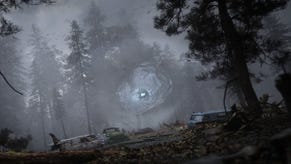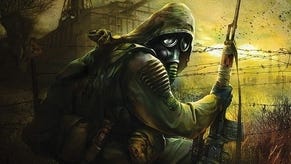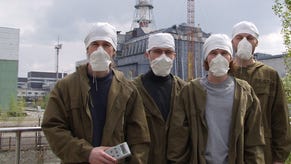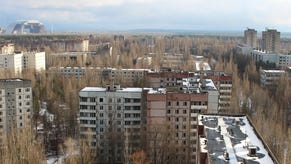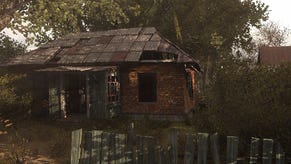S.T.A.L.K.E.R. Shadow of Chernobyl
Ready, steady, glow.
Originally announced in 2001, and having missed its proposed 2003 release date by a considerable margin, you can hardly blame folks for suspecting that this long-awaited Iron Curtain shooter was little more than vapourware.
Even after Kristan was flown to Kiev and granted fifteen minutes on the thing, or after publisher THQ attempted to similarly irradiate our dear Mr Garratt in the name of publicity, those doubts still lingered. OK, maybe it existed as some sort of advanced tech demo, but the chances of it appearing as a commercial game still seemed slender to a lot of jaded PC fans.
And you can hardly blame them. The FPS genre has seen plenty of titles get lost in the sinkhole of development, largely because the PC scene has sadly become hung up on the shiny baubles of graphical excess, and so each new title must be able to boast something faster and sexier than its peers. Each time the visual bar gets raised, plans get revised or scrapped and programmers everywhere scurry back to their nests to try and get one-up on the competition.
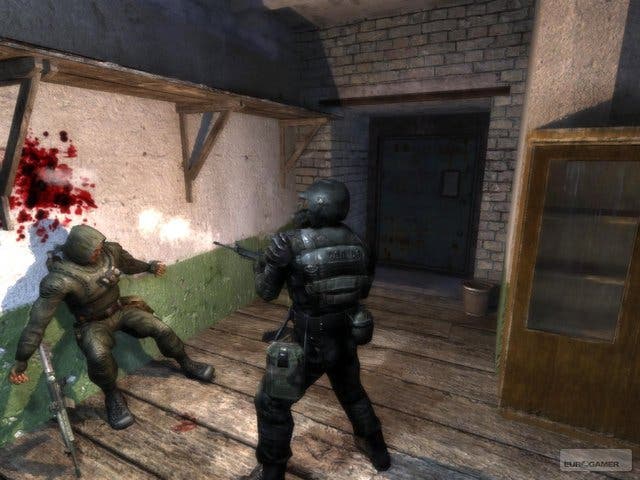
Meanwhile, the average humble PC gamer sits at home, wondering if they'll ever be able to enjoy these groundbreaking experiences without forking over a fortune to upgrade the innards of their rig.
Well, I can put your mind at rest on two scores. Firstly, S.T.A.L.K.E.R does exist - we finally have stand-alone preview code that can be played at length without PR overlords hovering over our shoulder, or developers guiding us to the bits that actually work. Secondly, while those with turbo-nutter PCs will certainly revel in the visual splendour GSC has conjured up, the game works just fine when installed on a less powerful machine. You'll miss out on some of the more snazzy flourishes but if you beefed up your computer to cope with Half-Life 2 or Doom 3, as I suspect most PC players eventually did, then you'll certainly be able to play S.T.A.L.K.E.R. Even on an ATI Radeon 9800 Pro it coped with the high detail setting with no problem.
What you will need is a muscular amount of RAM. The original tech specs for the title suggested 1GB of the stuff, but the preview code arrives with a note suggesting at least twice that amount. That's because the game pre-loads each of the sprawling play areas, so while loading times are sluggish (though this may yet be optimised further) once you're in the game, the frequent loading pauses which plagued Gordon Freeman's second outing are a thing of the past.
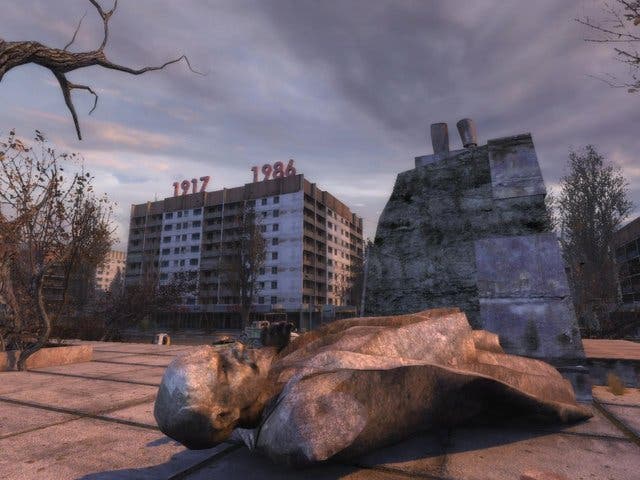
And what of the game itself? We've heard plenty about the A-Life system, which governs the behaviour of the thousand-strong population of mutants and mercenaries, and the game's visuals, which are as lush as a bleak, grey radioactive landscape can be, so I'm not going to waste time repeating the obvious. There's a whole bunker full of past coverage on those topics just one click away should you desire it.
No, I'm going to tell you how the damn thing plays. How these lofty elements are coalescing to produce something you can actually interact with, and be an active part of. Is it actually going to be any good? Thankfully, the answer seems to be a resounding "yes". In fact, lets make that a "YES", with capital letters and everything. With only a month and change before release, it's looking really good.
The opening movie, a sizable chunk of which made up the game's last trailer, casts you as a rather generic amnesiac tough guy, stranded in The Zone and looking for answers to your shadowy past. The year is 2012, and a second disaster at Chernobyl has created a 30km wide hellhole of radioactive anomalies, mutated wildlife and lawless scavengers. The Stalkers are freelance explorers who pick their way through the ruins, and bring out artefacts to be sold in the outside world and, with apparently nothing better to do, you set about learning their trade. From there, it's pretty much up to you.
Control is your standard WASD set-up. Interaction is via a context-sensitive prod of the F key, while instant medkits and ammo swaps are assigned to hotkeys for easy access during battle. It's all completely familiar and functional, so you're able to divert your energy towards exploring your new environment rather than constantly checking the keyboard. The only control quirk that caused minor annoyance was a rather counter-intuitive crouch command. You hit Ctrl to squat, but have to press Shift as well if you want to crouch further down. There's no prone position, and you have to keep the keys held down if you want to move while crouching. As you can imagine, this makes moving and aiming while crouched a bit of a fumble, and makes the stealthy approach a less attractive option.

"Oblivion with guns" was the tantalising soundbite that squirted from Patrick Garratt's word-teat following his trip to the reactor, and it's easy to see why. Vast, open landscapes await you, with story missions and side quests approachable in any order you fancy. Well, almost. One of the first things you realise is that, as always, the lofty ideal of non-linear gaming doesn't quite match the reality. There's a story to be told, and stories need structure. While you can piddle about, admiring the scenery and gathering items for as long as you like, the game does subtly herd you in certain directions whenever the narrative needs to be advanced. It's never crude or intrusive though and as you get to choose when this herding will take place, it's hard to resent the presence of a little formal structure.
Certain confrontations, such as a sprawling conflict between Stalkers and the Army, or a bandit raid on a Stalker camp, are scripted insomuch as you have to take part in them to save key characters whose information is vital to progress. There are also certain sections that must be traversed to find specific items. While there's freedom to choose when you tackle the missions, the concept of a completely open-ended Choose Your Own Adventure should probably be debunked now to avoid disappointment.
Each area is, however, completely free-roaming - and the hefty RAM requirements really make the difference here. You're able to spy a campfire burning in the distance, hike for kilometres to reach it, discover it's in the middle of a ruined farm complex, clamber inside one of the buildings, scramble onto the roof and look all the way back to where you started out - and the game doesn't even break a sweat. It's a seamless, natural environment and one that begs for exploration, even without the promise of hot, hot gun action. Although the game refers to each map area as a level, you're always free to go back and forth between them. Indeed, sometimes you'll have to, as you make your way back to certain characters to trade items or collect rewards. The only restriction is that passage between levels can only take place at specified entry points - tunnels, checkpoints and the like. You can't just wander over the boundary anywhere you fancy.



